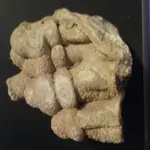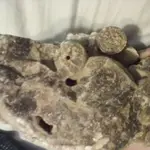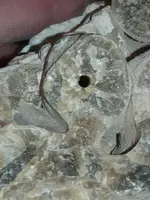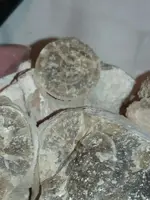"The species of palm is called scientically, Palmoxylon mohavensis."
The palm root pictured would be called Rhizopalmoxylon.
The common practice for petrified wood is to use "form genera" names for specimens, thus all petrified palm fiber is described as Palmoxylon sp and the roots as Rhizopalmoxylon sp. The reason for this convention is that the wood rarely gets as much attention as the foliage when plants are described and these components are rarely, if ever, found attached.
Harry Pristis is referring to a post where I called a petrified palm root from the late upper Miocene Dove Spring Formation, Mojave Desert, California,
Palmoxylon mohavensis; HP pointed out that by convention the fossil palm root should be called
Rhizopalmoxylon mohavensis.
To clarify: I am well aware of the current paleobotanical convention regarding "form" genera for fossil palm specimens. Yet, there is presently no known fossil palm root that paleobotanists would call
Rhizopalmoxylon mohavensis. On the other hand, in the paleobotanical literature there are indeed petrified palm roots identified as
Palmoxylon mohavensis, as named by paleobotanist Irma E. Webber in 1933.
Here's the salient quote, from
Woods From The Ricardo Pliocene Of Last Chance Gulch, California, by Irma E. Webber: Contributions To Paleontology, Carnegie Institute Of Washington Publication 412, Issued in September, 1933; the words "palm root" in parentheses are mine, by the way, to help avoid confusion through Webber's repeated use of the pronoun "it."
"
Palmoxylodon mohavensis (new species). Drabble has published descriptions of a number of modern palm roots, but none of the specimens described by him is identical with that of the fossil species under consideration. The species was compared with a number of roots of the modern Washingtonia. Since the Pliocene palm root differs somewhat from that of Washingtonia, and since it (palm root) was associated with palm stems that differ markedly from those of Washingtonia, it (palm root) is referred to
Palmoxylon mohavensis, the species of palm represented by wood in the deposits."
The upshot is that through long-held established usage, Irma E. Webber's original descriptions of the Dove Spring Formation petrified palm roots as
Palmoxylon mohavensis must retain paleobotanical, nomenclatural precedence.









